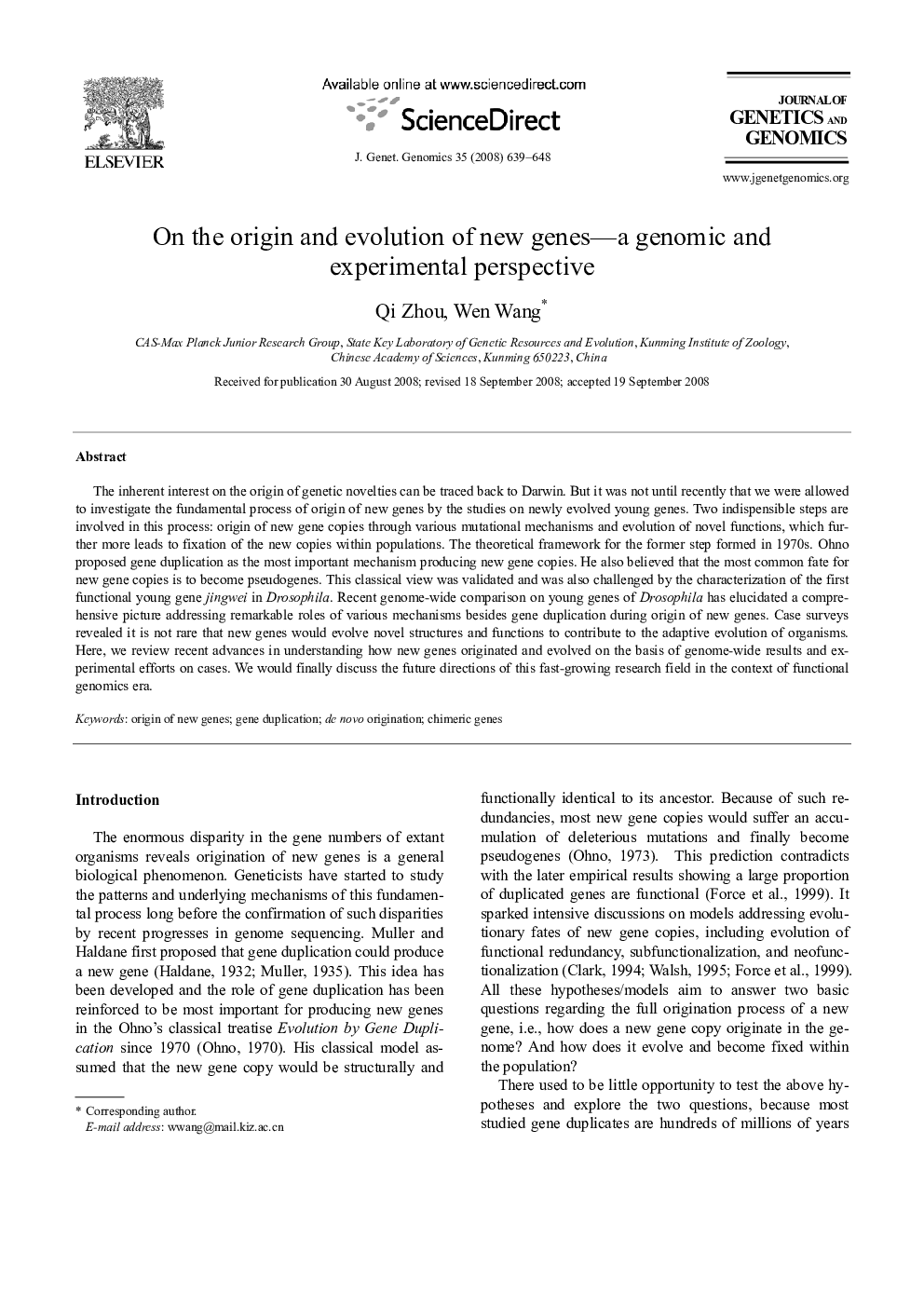| Article ID | Journal | Published Year | Pages | File Type |
|---|---|---|---|---|
| 2788057 | Journal of Genetics and Genomics | 2008 | 10 Pages |
The inherent interest on the origin of genetic novelties can be traced back to Darwin. But it was not until recently that we were allowed to investigate the fundamental process of origin of new genes by the studies on newly evolved young genes. Two indispensible steps are involved in this process: origin of new gene copies through various mutational mechanisms and evolution of novel functions, which further more leads to fixation of the new copies within populations. The theoretical framework for the former step formed in 1970s. Ohno proposed gene duplication as the most important mechanism producing new gene copies. He also believed that the most common fate for new gene copies is to become pseudogenes. This classical view was validated and was also challenged by the characterization of the first functional young gene jingwei in Drosophila. Recent genome-wide comparison on young genes of Drosophila has elucidated a comprehensive picture addressing remarkable roles of various mechanisms besides gene duplication during origin of new genes. Case surveys revealed it is not rare that new genes would evolve novel structures and functions to contribute to the adaptive evolution of organisms. Here, we review recent advances in understanding how new genes originated and evolved on the basis of genome-wide results and experimental efforts on cases. We would finally discuss the future directions of this fast-growing research field in the context of functional genomics era.
